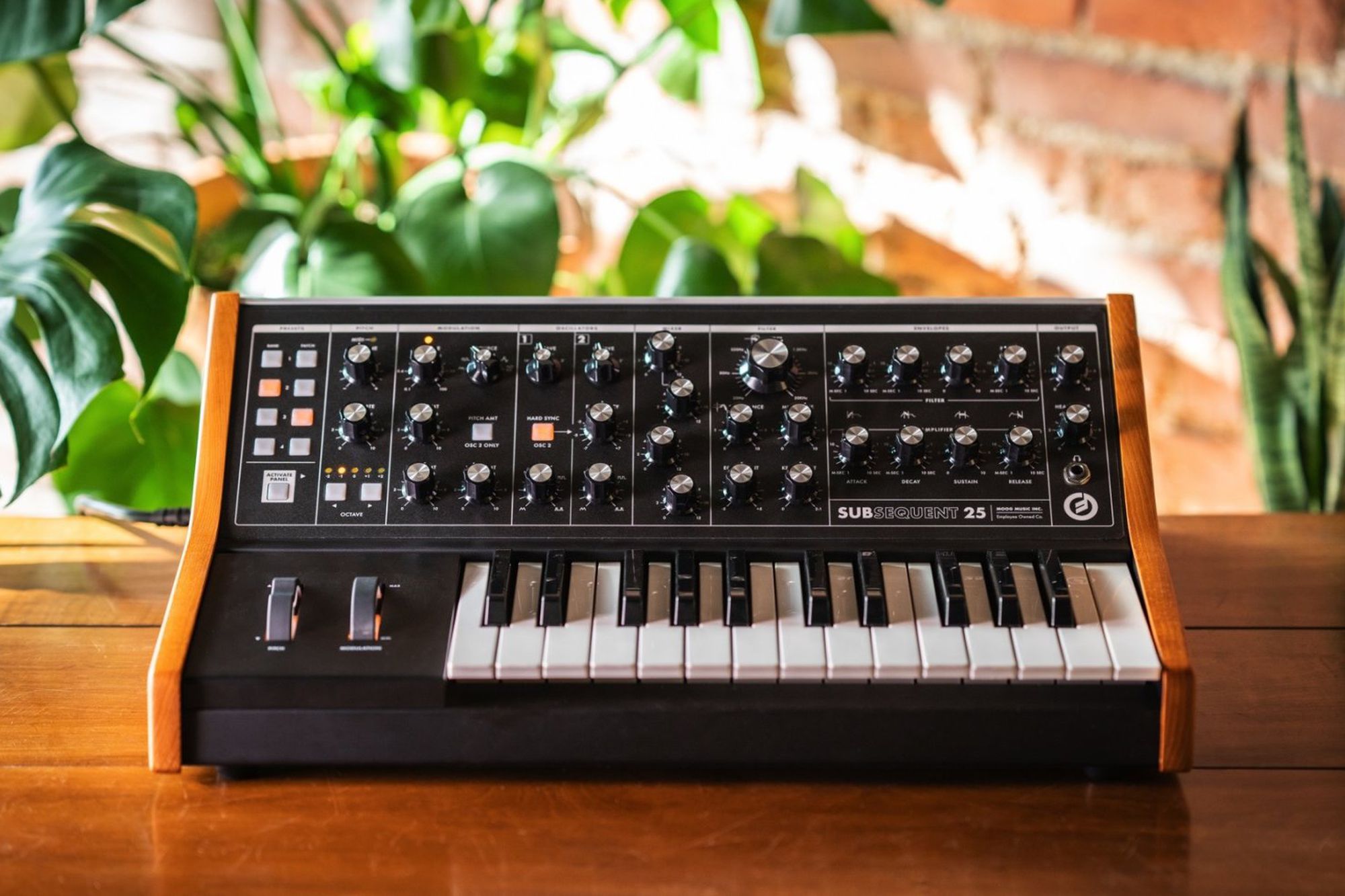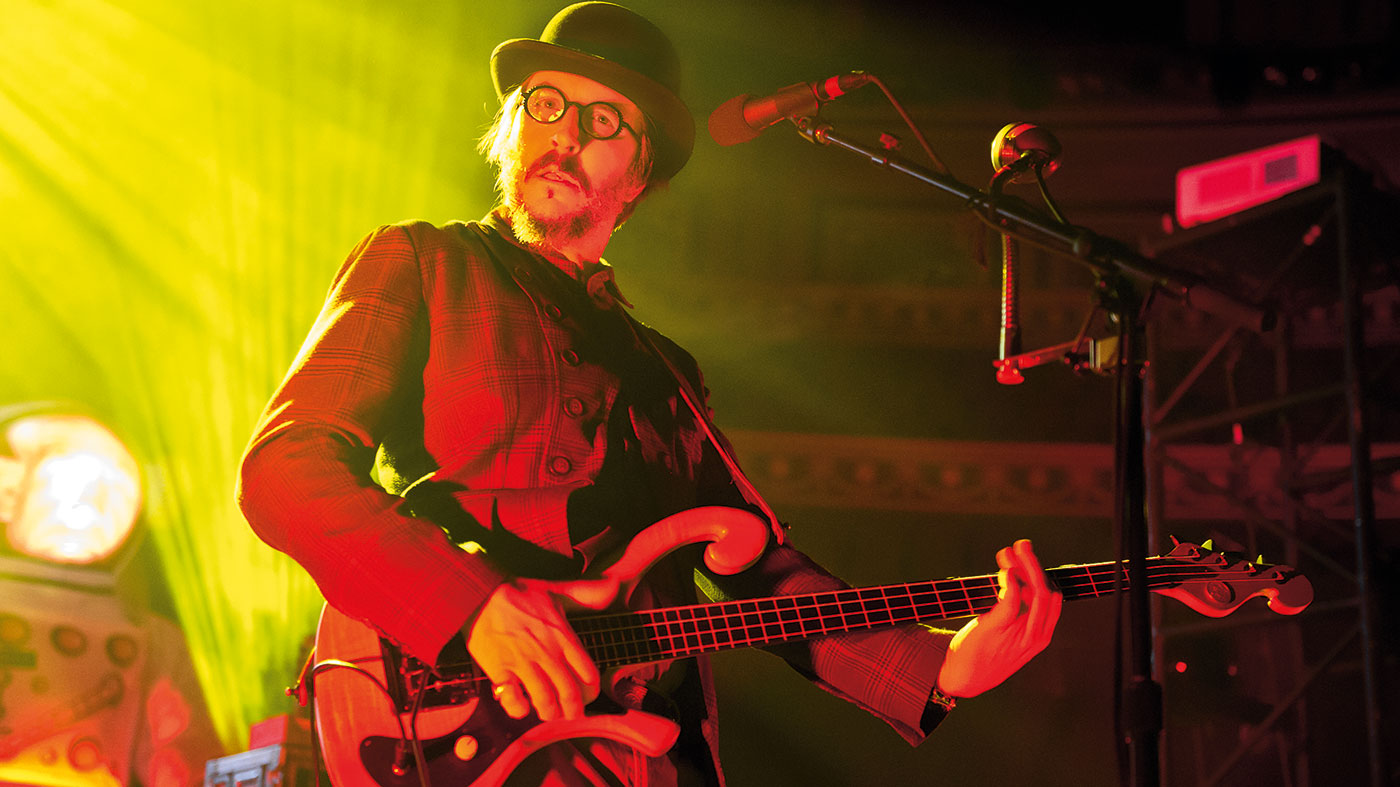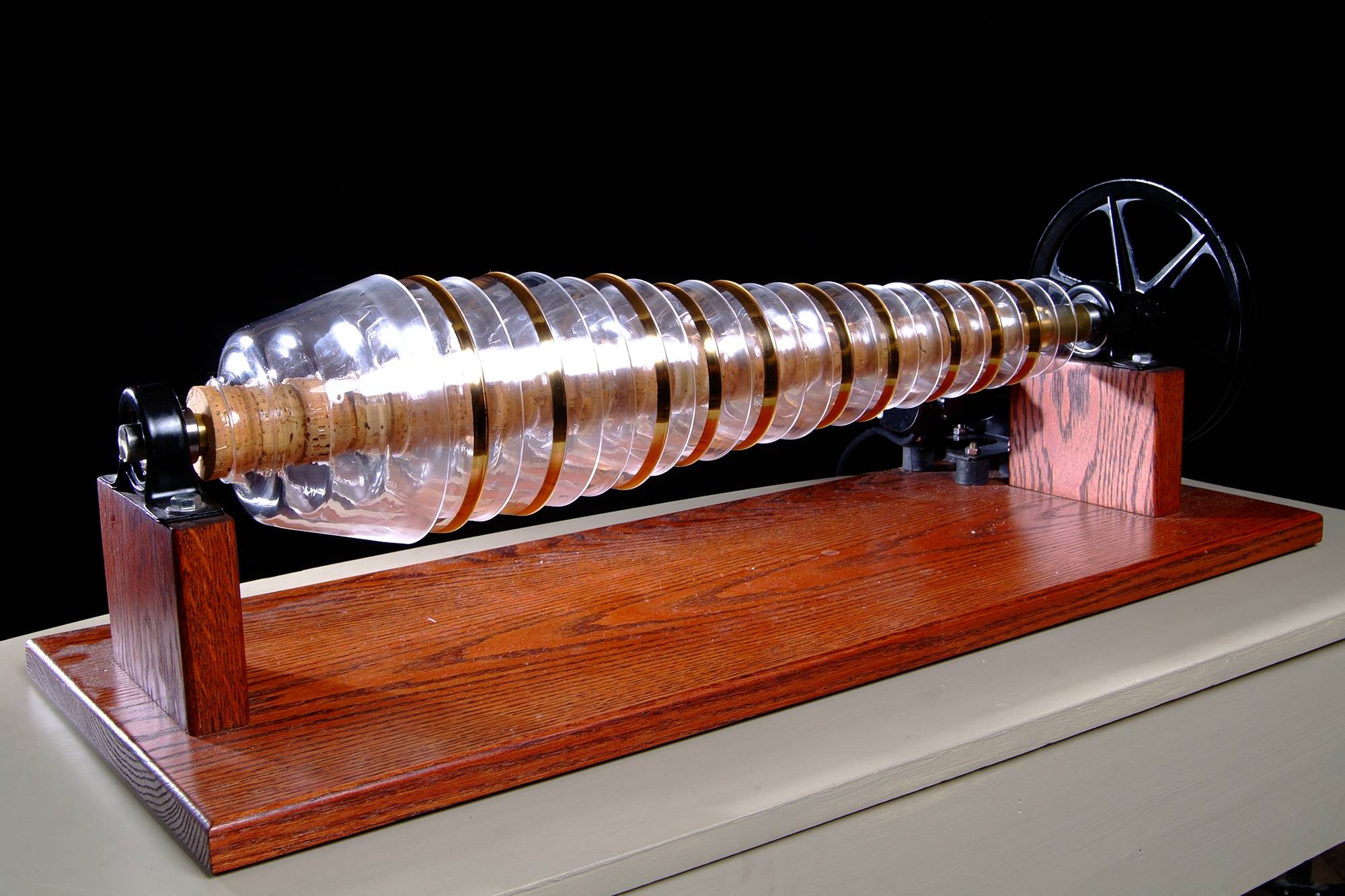Home>Instruments>Synthesizer>When Was The Moog Synthesizer Invented


Synthesizer
When Was The Moog Synthesizer Invented
Modified: January 22, 2024
Discover the history of the Moog Synthesizer and learn when this groundbreaking synthesizer was first invented. Explore the innovation and impact of this iconic instrument.
(Many of the links in this article redirect to a specific reviewed product. Your purchase of these products through affiliate links helps to generate commission for AudioLover.com, at no extra cost. Learn more)
Table of Contents
Introduction
The Moog synthesizer is an iconic electronic musical instrument that has played a pivotal role in shaping the sound of modern music. Developed by engineer and inventor Dr. Robert Moog in the mid-1960s, the Moog synthesizer revolutionized the way musicians created and produced music by introducing the concept of voltage-controlled oscillators, filters, and amplifiers.
Prior to the emergence of the Moog synthesizer, electronic musical instruments were limited in their capabilities and often required extensive technical knowledge to operate. Moog’s vision was to create a versatile and user-friendly instrument that could be easily accessible to musicians of all backgrounds and experience levels.
With its distinctive analog sound and modular design, the Moog synthesizer quickly gained popularity in the music industry. Its unique ability to produce a wide range of sounds, from deep bass tones to soaring leads, opened up new possibilities for musicians, composers, and sound designers.
Moreover, the portability of the Moog synthesizer made it suitable for live performances and studio recordings, enabling artists to experiment and push the boundaries of traditional music genres.
Over the years, the Moog synthesizer continued to evolve and innovate, with various models and iterations being released. Its timeless appeal and enduring legacy have cemented its status as one of the most influential and sought-after synthesizers in the world.
In this article, we will delve into the fascinating history of the Moog synthesizer, exploring its early development, key features, and its significant impact on the music industry. We will also examine the evolution of Moog synthesizer technology and its ongoing influence on contemporary music production.
Join us as we embark on a sonic journey through the realms of the Moog synthesizer, uncovering the secrets behind its sound and unravelling its enduring legacy in the world of music.
Early development of electronic musical instruments
The origins of electronic musical instruments can be traced back to the late 19th century, with the invention of instruments like the Telharmonium and the Theremin. These early devices laid the groundwork for the development of synthesizers and paved the way for Dr. Robert Moog’s groundbreaking work.
The Telharmonium, invented by Thaddeus Cahill in 1897, was one of the first electronic musical instruments. It used electromechanical means to generate sounds, producing a range of tones and timbres. However, the Telharmonium was large, expensive, and not very portable, limiting its accessibility to a wider audience.
In the 1920s, another significant development in electronic music came with the invention of the Theremin by Leon Theremin. The Theremin used hand gestures to control pitch and volume, creating an ethereal and haunting sound. This instrument gained popularity and was even featured in orchestral performances.
Following these early advancements, the 1940s and 1950s saw further experiments with electronic musical instruments. Innovators such as Raymond Scott and RCA’s Mark II Sound Synthesizer pushed the boundaries of sound manipulation and synthesis.
Despite these early breakthroughs, electronic musical instruments were still seen as experimental and niche. They often required technical expertise to operate and were not widely accessible to musicians.
It was during this time that Dr. Robert Moog entered the scene. In the early 1960s, Moog, a physicist and engineer, began exploring the potential of modular synthesizers. His aim was to create an instrument that could generate an endless variety of sounds using voltage-controlled oscillators, filters, and amplifiers.
Moog’s key innovation was the design and implementation of the voltage-controlled oscillator (VCO). By using voltage to control pitch and other parameters, Moog was able to offer musicians a more intuitive way to manipulate sound.
Building on the work of pioneers like Raymond Scott and Don Buchla, Moog created his first commercial modular synthesizer, the Moog Modular Synthesizer, in 1964. This initial release set the stage for the development of subsequent Moog synthesizers, which would go on to revolutionize the music industry.
The early development of electronic musical instruments laid the foundation for the advancements and breakthroughs that would come with the birth of the Moog synthesizer. Dr. Robert Moog’s ingenuity and determination sparked a new era of sound exploration and forever changed the landscape of music production.
The birth of the Moog synthesizer
The Moog synthesizer, named after its creator Dr. Robert Moog, had its humble beginnings in the basement of Moog’s Trumansburg, New York home in the mid-1960s.
Moog’s goal was to design a versatile and user-friendly electronic instrument that would enable musicians to create a wide range of sounds. He believed that by making synthesizers more accessible, he could empower artists to explore new sonic territories and push the boundaries of music.
Moog’s breakthrough came with the development of the Moog Modular Synthesizer, which was first introduced in 1964. This instrument featured a modular design, allowing users to customize and connect different modules to create unique sound combinations.
One of the defining features of the Moog synthesizer was the voltage-controlled oscillator (VCO), which allowed musicians to produce precise and stable pitches. This innovation was a game-changer, as it provided greater control and accuracy over the generated sounds, revolutionizing the world of electronic music.
The Moog synthesizer gained traction in the music industry when it caught the attention of experimental and avant-garde musicians. Artists like Wendy Carlos and Klaus Schulze embraced the possibilities offered by the Moog synthesizer, harnessing its capabilities to create groundbreaking compositions.
In 1968, Dr. Robert Moog introduced the Minimoog Model D, a portable and affordable version of the Moog synthesizer. This compact synthesizer became an instant hit, making synthesizers more accessible to musicians worldwide. Its distinctive sound and versatility made it a staple in popular music, with artists such as Stevie Wonder, Keith Emerson, and Herbie Hancock incorporating it into their performances and recordings.
Notably, the Moog synthesizer gained widespread recognition and popularity with Wendy Carlos’ 1968 album “Switched-On Bach,” which featured innovative synthesizer arrangements of Johann Sebastian Bach’s compositions. The album won multiple Grammy Awards and demonstrated the musical potential and expressive capabilities of the Moog synthesizer.
By the 1970s, the Moog synthesizer had solidified its place in the music industry and became a symbol of electronic music. Its distinct analog sound and expressive capabilities revolutionized the way music was created, influencing a wide range of genres from rock and pop to jazz and experimental music.
The birth of the Moog synthesizer marked a turning point in music history, as it brought electronic sound synthesis into the mainstream and forever changed the sonic landscape. Its impact on music continues to be felt today, with countless artists and musicians still utilizing Moog synthesizers in their creative endeavors.
Key features and components of the Moog synthesizer
The Moog synthesizer is renowned for its unique combination of features and components that allow musicians to shape and manipulate sound in innovative ways. Here are some of the key elements that make the Moog synthesizer a powerful and influential instrument:
1. Voltage-controlled oscillators (VCOs): The VCOs in the Moog synthesizer generate the raw waveforms that form the basis of the sound. VCOs offer precise control over parameters such as pitch, waveform shape, and frequency modulation, allowing for the creation of rich and diverse sonic textures.
2. Filters: The Moog synthesizer features voltage-controlled filters (VCFs) that shape the timbre and tone of the sound. The famous Moog low-pass filter attenuates higher frequencies, giving the characteristic warm and fat sound associated with Moog synthesizers.
3. Amplifiers: The voltage-controlled amplifiers (VCAs) in the Moog synthesizer control the volume and dynamics of the sound. They can shape the attack, sustain, and release of the notes, contributing to the expressiveness and character of the musical performance.
4. Modulation capabilities: The Moog synthesizer offers various modulation options, including voltage-controlled modulation (VCM), which allows the user to modulate parameters such as pitch, filter cutoff, and oscillator levels. Modulation sources, such as envelopes and LFOs (low-frequency oscillators), can be routed to different destinations for complex and evolving sound manipulation.
5. Patching and modular design: The original Moog synthesizers featured a modular design, allowing musicians to create custom configurations by patching different modules together. This modular approach provided immense flexibility, allowing users to experiment and create entirely unique sounds.
6. Keyboard and playability: Many Moog synthesizers, like the Minimoog Model D, come equipped with a built-in keyboard, enabling immediate playability. The responsiveness and expressiveness of the keyboard allow musicians to infuse their performances with dynamics and nuance.
7. Portability: The development of compact synthesizers like the Minimoog Model D made Moog synthesizers more portable and suitable for live performances. This portability expanded the possibilities for musicians, allowing them to bring the unique sound of the Moog synthesizer to stages around the world.
These key features and components of the Moog synthesizer combine to create a powerful and versatile instrument that has shaped the sound of countless musical genres. The distinctive sonic characteristics and expressive capabilities of the Moog synthesizer continue to captivate musicians and inspire creative exploration in the world of electronic music.
Impact and influence of the Moog synthesizer on music
The Moog synthesizer has had a profound impact on the world of music, revolutionizing sound creation and shaping the sonic landscape across a wide range of genres. Here are some of the ways the Moog synthesizer has influenced and shaped the course of music:
1. Expansion of sonic possibilities: The Moog synthesizer introduced a new level of sound manipulation and control to musicians. The ability to create and manipulate a vast array of electronic sounds opened up endless possibilities for sonic exploration and experimentation.
2. Popularization of electronic music: The Moog synthesizer played a crucial role in popularizing electronic music. Its distinctive warm and rich sound became synonymous with the genre, capturing the imaginations of both musicians and listeners alike.
3. Redefinition of traditional instruments: The Moog synthesizer paved the way for the redefinition and reimagination of traditional instruments. Its ability to emulate and expand upon the sounds of acoustic instruments allowed musicians to create entirely new timbres and textures, pushing the boundaries of musical expression.
4. Influence on popular music genres: The Moog synthesizer made a significant impact on popular music genres, such as rock, pop, and funk. Artists like Pink Floyd, The Beatles, Stevie Wonder, and Parliament-Funkadelic incorporated the unique sounds of the Moog synthesizer into their recordings, cementing its place in the mainstream music scene.
5. Exploration of new genres: The Moog synthesizer played a major role in the emergence of new genres and subgenres. From ambient and electronic dance music to progressive rock and experimental music, the Moog synthesizer provided musicians with the tools to create sonic atmospheres and push the boundaries of traditional song structures.
6. Influence on film scores and soundtracks: The distinctive sound of the Moog synthesizer has had a lasting impact on the world of film scores and soundtracks. Its ability to create otherworldly and atmospheric sounds has been utilized in iconic films like “A Clockwork Orange,” “Blade Runner,” and “Tron,” immersing audiences in unique sonic landscapes.
7. Inspiration for future generations: The Moog synthesizer continues to inspire and influence musicians, producers, and sound designers today. Its legacy can be seen in the proliferation of synthesizers and electronic music production in modern music, with countless artists drawing inspiration from the pioneering work of Dr. Robert Moog.
The Moog synthesizer’s impact on music is immeasurable. Its disruptive technology and innovative design forever changed the way music is created, pushing the boundaries of sonic exploration and influencing generations of musicians and artists across the globe.
Evolution and advancements in Moog synthesizer technology
The Moog synthesizer has undergone significant evolution and advancements since its inception in the 1960s. Over the years, Dr. Robert Moog and his team, as well as subsequent owners of the Moog brand, have continued to innovate and refine the instrument, pushing the boundaries of sound creation and performance capabilities. Here are some key milestones in the evolution of Moog synthesizer technology:
1. Modular to compact: The early Moog synthesizers, such as the Moog Modular Synthesizer, featured a modular design, allowing users to customize and connect various modules to create unique configurations. However, as technology advanced, Moog introduced compact synthesizers like the Minimoog Model D in 1968. These instruments combined multiple modules into a single, portable unit, making them more accessible and user-friendly.
2. Polyphonic capabilities: In the 1970s, Moog expanded its product line to include polyphonic synthesizers, which allowed for the simultaneous generation of multiple notes or voices. The Moog Polymoog, introduced in 1975, was one of the first commercially available polyphonic synthesizers and showcased the brand’s commitment to pushing the boundaries of sound synthesis.
3. Digital advancements: In the 1980s, Moog embraced digital technology, incorporating digital control systems into their synthesizers. The Moog Memorymoog, released in 1982, featured digitally controlled oscillators and memory storage for patches, combining the analog warmth of Moog with the convenience of memory recall.
4. Rebirth of analog: In the 2000s, there was a resurgence in the popularity of analog synthesizers, with musicians and producers seeking the unique sonic character that these instruments offered. Moog responded to this trend and relaunched their analog synthesizers, including the highly acclaimed Moog Voyager in 2002 and the subsequent release of the Moog Subsequent 37 and Subsequent 25.
5. Integration of modern features: Moog synthesizers have continued to evolve by incorporating modern features and technologies. This includes features such as MIDI connectivity, USB connectivity, enhanced modulation capabilities, expanded memory storage, and even the integration of digital effects processing.
6. Eurorack compatibility: In recent years, Moog has embraced the growing Eurorack modular synthesizer format trend in the electronic music community. They have released modules that are compatible with the Eurorack standard, allowing users to integrate Moog’s classic sound into larger modular systems or customize their own Moog-based setups.
Throughout its evolution, Moog synthesizer technology has remained true to its roots while embracing modern advancements. The commitment to high-quality sound, innovative design, and user-friendly interfaces has allowed Moog synthesizers to remain at the forefront of electronic music production. With each new release, Moog continues to inspire musicians and push the boundaries of sound synthesis, ensuring that the Moog legacy lives on.
Conclusion
The Moog synthesizer has undeniably left an indelible mark on the world of music. With its innovative design, distinctive analog sound, and user-friendly interfaces, the Moog synthesizer revolutionized sound creation and ignited a new era of electronic music.
From its humble beginnings in the 1960s to its ongoing evolution and advancements, the Moog synthesizer has continuously pushed the boundaries of sonic possibilities. Its impact on music can be seen in a multitude of genres, from experimental and ambient to rock and pop.
Throughout the years, the Moog synthesizer has found its way into the hands of numerous musicians, sound designers, and producers, influencing their creative process and shaping the sound of their compositions. Its presence in iconic recordings and film scores is a testament to its enduring legacy.
As technology advances, the Moog synthesizer continues to innovate, incorporating modern features while staying true to its analog roots. From modular systems to compact synthesizers and the resurgence of analog sound, Moog synthesizers have embraced the ever-changing demands of musicians and pushed the boundaries of sound synthesis.
Today, the Moog synthesizer remains a symbol of limitless sonic exploration and artistic expression. Its distinctive warm and fat sound continues to captivate listeners and inspire musicians around the world.
In conclusion, the Moog synthesizer has not only changed the way music is created but has also shaped the very fabric of modern music itself. Its legacy as a groundbreaking and influential instrument is undeniable, and its impact on the world of music will continue to resonate for generations to come.











